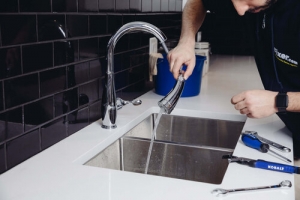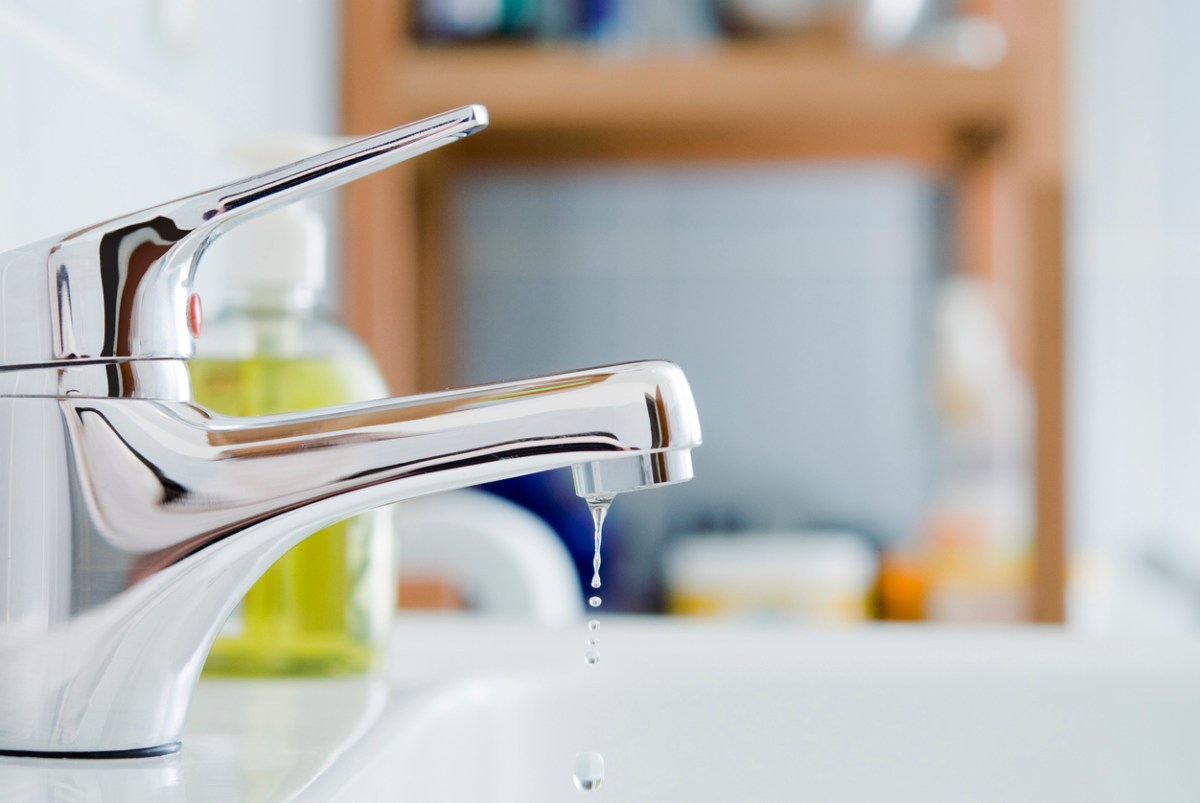When It's Critical to Resolve a Dripping Faucet
When It's Critical to Resolve a Dripping Faucet
Blog Article
What are your thoughts about 4 Common Reasons for a Leaky Faucet?

Dripping faucets could look like a small inconvenience, however their effect surpasses just the nuisance of the audio. From wasting water to incurring unneeded economic costs and health and wellness threats, disregarding a dripping faucet can lead to numerous effects. In this post, we'll explore why it's critical to address this common home problem without delay and effectively.
Wastage of Water
Environmental Effect
Dripping faucets contribute considerably to water waste. According to the Environmental Protection Agency (EPA), a single faucet leaking at one drip per secondly can throw away greater than 3,000 gallons of water each year. This not just strains water resources but also affects ecosystems and wildlife dependent on them.
Financial Costs
Increased Water Bills
Beyond the environmental influence, trickling taps can blow up water costs significantly. The collected waste in time equates into higher energy expenditures, which can have been stayed clear of with prompt repair work.
Prospective Building Damages
Additionally, long term leaking can result in damage to components and surface areas surrounding the faucet. Water buildup can create discoloration, deterioration, and also structural issues if left unattended, causing extra repair work costs.
Health Problems
Mold And Mildew and Mildew Growth
The constant visibility of wetness from a dripping faucet develops a suitable environment for mold and mildew and mildew growth. These fungis not only jeopardize indoor air top quality but additionally present health threats, particularly for people with breathing conditions or allergic reactions.
Waterborne Diseases
Stagnant water in trickling faucets can come to be a breeding ground for microorganisms and other virus, enhancing the threat of waterborne illness. Contaminants such as Legionella germs prosper in stagnant water, potentially resulting in severe ailments when consumed or breathed in.
Do it yourself vs. Specialist Repair service
Advantages and disadvantages of DIY Repair Work
While some might try to repair a trickling faucet themselves, DIY fixings come with their very own collection of difficulties. Without correct knowledge and tools, do it yourself attempts can aggravate the issue or cause insufficient repair work, lengthening the trouble.
Benefits of Employing a Specialist Plumber
Working with a professional plumber makes sure that the underlying root cause of the trickling faucet is dealt with successfully. Plumbers possess the competence and tools to detect and fix faucet issues effectively, saving time and reducing the danger of additional damage.
Step-by-Step Guide to Taking Care Of a Dripping Tap
Devices Called for
Prior to trying to deal with a dripping tap, collect the needed devices, consisting of a flexible wrench, screwdrivers, substitute parts (such as washers or cartridges), and plumber's tape.
Typical Faucet Issues and Their Solutions
Identify the type of faucet and the details problem causing the drip. Usual troubles include worn-out washers, rusty valve seats, or malfunctioning O-rings. Refer to maker directions or online tutorials for step-by-step guidance on fixings.
Preventive Measures
Routine Upkeep Tips
To prevent dripping faucets, perform routine maintenance such as cleansing aerators, checking for leakages, and replacing damaged components promptly. In addition, consider setting up water-saving devices or upgrading to extra efficient components.
Importance of Prompt Repairs
Dealing with trickling taps as quickly as they're seen protects against more water wastage and possible damage, ultimately saving both water and money over time.
Influence On Building Worth
Assumption of Well-Maintained Property
Preserving a property in good condition, consisting of attending to upkeep concerns like leaking taps, improves its regarded worth and worth among potential purchasers or lessees.
Influence on Resale Worth
Qualities with well-kept plumbing fixtures, consisting of faucets, command greater resale values in the property market. Addressing trickling faucets can contribute to a favorable impression during residential or commercial property examinations and negotiations.
Ecological Responsibility
Specific Contribution to Conservation
Taking responsibility for taking care of trickling faucets lines up with more comprehensive initiatives towards water conservation and ecological sustainability. Every individual's actions collectively make a substantial effect on maintaining precious resources.
Sustainable Living Practices
By focusing on punctual repair work and embracing water-saving routines, people add to sustainable living practices that benefit both existing and future generations.
Conclusion
Dealing with a leaking tap surpasses plain ease; it's an important step toward saving water, minimizing economic prices, and protecting health and wellness and building. Whether via do it yourself fixings or specialist assistance, taking action to fix dripping faucets is a little yet impactful method to advertise liable stewardship of resources and contribute to a healthier, a lot more lasting future.
Why Are My Faucets Dripping (And Can I Fix it Myself)?
Causes of a Dripping or Leaking Faucet
Whether you’re hearing drops of water falling and hitting a sink, or noticing water ooze out from the base of the spout, you shouldn’t ignore a dripping or leaking faucet. And, the good news is, sometimes you can fix the problem yourself.
In this article, we’ll review a few common causes of dripping and leaky. We’ll also walk you through some basic ways to find the problem and handle it without calling anyone — and let you know when to call in a pro.
But, no matter what the cause, or whether you can handle it on your own, the sooner you address it, the better.
Each drip may be a tiny amount of water. But, they all add up quickly. According to the U.S. Geological Survey, one faucet losing one drop every 20 seconds — five a minute — wastes around a liter of water every day, and 173 gallons a year.
Add in more than one in your house, and it’s a lot of water to waste. So, we’ll help you get to the bottom of things quickly.
Four Reasons Your Faucet May Be Dripping
Aerator is Damaged or Unseated Valve Seat is Corroded O Ring is Loose or Worn Out Part of the Assembly is Loose Aerator is Damaged or Unseated
If you unscrew the end of your faucet, you’ll find the aerator. It’s the little stem piece with a screen on it that shuts off the water circulation.
If it’s damaged, or if it’s not sitting right, it will allow water to pass through.
Valve Seat is Corroded
Next is the valve seat, which is connected to the washer. If the washer wasn’t in place correctly, then it could have ground against the seat. Over time, this damages the valve seat.
The problem could also be corrosion: Over time, the part has worn out, and it’s now allowing water to pass through.
O Ring is Loose or Worn Out
Since the o ring is only a small rubber gasket, it’s a common reason why the faucet is dripping. You’ll find it at the base of the faucet, and it’s there to keep water from coming out where it’s not supposed to.
However, it’s common for the o ring to wear out over time. When it does, you’ll notice a drip.
Part of the Assembly is Loose
So far, we’ve looked at a few small, specific parts. But, the problem could be anywhere in the assembly if something’s out of place.
Even if a part isn’t damaged, over time, it may have become loose or dislodged. It could be the parts we mentioned, or the aerator at the tip of the faucet, the stem itself,
Can I Fix a Leaky Faucet Myself?
Depending on the problem, and how handy you are, there’s a chance you can fix a leaky faucet without calling a professional. But, you do run the risk of making the problem worse.
If it’s a small drip, you can certainly try a few troubleshooting tactics. We’ll walk you through them in a moment.
But, no matter what, your first step should be shutting off the water coming into the faucet. You should find a shutoff valve under the sink on the pipes leading to it. Turn each one clockwise until they close tightly.
Next, make sure you have the right tools for whatever you’re attempting. It’s tempting to make do with what you have. But, you need the right ones for a reason: You’re often dealing with small parts that can break if you handle them carelessly.
If you’re feeling confident, here are some places to start.
Items Near the Tip of the Faucet
A few of the parts we mentioned — particularly the valve seat and washer — are located at the tip of the faucet where the water comes out. They’re easy to access, making it a good place to start.
Check the O Ring
To check the o ring, you’ll need to take off the spout at the base. It’s easiest on kitchen sinks with long spouts, versus the smaller, bulkier base on most bathroom sinks.
Either way, this can be tricky, so do it carefully and don’t force anything. If it’s not coming right off, you’re much better off calling in a pro than possibly breaking something.
For a kitchen sink, there’s usually a nut or coupling assembly at the base of the spout. These often slide off easily without using any tools.
Once you’ve disassembled those parts, gently but forcefully twist off the spout.
Then, you can see the o rings. There should be two of the rubber gaskets on the base. If they look worn or damaged, replace them, and see if that solves the problem.

Do you really like more info about ? Post a remark down below. We'd be happy to know your thoughts about this blog posting. We are looking forward that you visit us again in the future. Do you know about somebody who is looking into the subject? Take a moment to promote it. Thank you for taking the time to read it.
Report this page